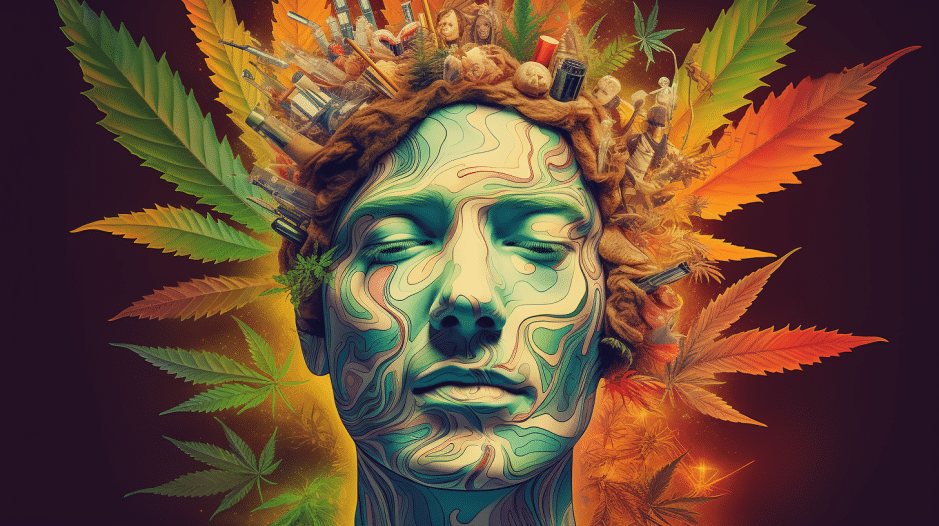Cannabis legalization is spreading, but what does it mean for public health? A new review summarizes the research on the impacts of legalizing recreational cannabis use.
Key Facts:
- Recreational cannabis is now legal nationally in Canada, Uruguay, and Malta. 18 U.S. states plus D.C. have also legalized recreational use.
- Research finds mixed evidence for effects of legalization on cannabis use, attitudes, health, driving, and crime.
- Studies show increased cannabis use mainly in adults, but less consistent evidence for youth use changes.
- Legalization linked to more cannabis-related hospital visits, especially in youth. But findings vary across countries.
- Mixed findings for legalization’s role in opioid harms, car crashes, arrests and racial disparities.
Source: Substance Abuse: Research and Treatment (Vol. 17: 1-22)
The Changing Cannabis Landscape
Cannabis is the world’s most widely used illicit drug, with nearly 2.5% of the global population reporting past-year use. Rates are particularly high in North America, where cannabis use is common and increasingly accepted.
With growing public and political support, cannabis laws are rapidly changing worldwide. Decriminalization and medical cannabis are spreading in many nations.
Further, Canada, Uruguay and Malta have taken the extra step to fully legalize recreational cannabis nationally.
In the U.S., state-level recreational legalization is surging. Colorado and Washington were first in 2012, with nearly half of all states joining them since.
This liberalizing landscape raises critical questions – what are the public health impacts of legalizing recreational cannabis? Does increased access affect cannabis use, attitudes, health, driving, crime?
Research is booming, but findings are complex. A new systematic review synthesizes this evidence, focusing on studies with rigorous longitudinal designs.
Mixed Effects of Cannabis Use
A major concern is that legalization will increase cannabis use, especially in vulnerable groups like youth.

But the review found mixed evidence. For adolescents, 60% of studies found no impact of legalization or inconsistent findings.
Canadian and U.S. research showed no changes in teen cannabis use rates, initiation, or frequency after legalization.
However, other studies did associate legalization with increased adolescent cannabis use. Overall, there is no clear effect of legalization on teen cannabis use.
In adults, findings were more consistent. Most studies of the general adult population linked legalization to increased cannabis use.
This held in different locations like California, Canada, and across the U.S. Legalization impacts were also seen in vulnerable subgroups.
In pregnant women and cancer patients, studies found increased cannabis use after legalization. But the review highlights the literature is still limited in clinical samples.
For other substance use like alcohol, cigarettes and opioids, findings were mixed. Most studies found no “spillover effect” of increased use with cannabis legalization.
Instead, some research suggests legalization may be linked to decreasing cigarette smoking, highlighting a potential substitution effect.
However, overall evidence does not indicate large changes in use of other substances.
Complex Shifts in Attitudes
Another focus is whether legalization shifts attitudes, perceived harms, and intentions to use cannabis. But the review found the evidence on attitudes to be mixed and limited.
Some studies showed legalization associated with lower perceived risk and greater willingness to use cannabis.
However, other research found attitudes and intentions changed similarly over time in both legal and non-legal jurisdictions.
There is inconsistent evidence that recreational cannabis legalization impacts related attitudes or alters social norms.
Cannabis & ER visits
A more consistent finding was increased cannabis-related hospital utilization following legalization. Most studies found more emergency department visits after legalization, especially in youth.
In multiple U.S. states and in Canada, adolescent cannabis exposures and hospital visits rose post-legalization.
However, for adults the impact was mixed. While some U.S. research shows increased adult ER visits, Canadian studies found no changes or that visit rates were already climbing before legalization.
This suggests properly designed regulations, like Canada’s strict initial purchasing rules, may prevent spikes in cannabis hospital visits.
Overall, the research indicates a likely link between legalization and more cannabis-related hospital care, but mainly for adolescents.
Effect on Opioid Usage
Another key health issue is how legalization affects the opioid crisis. About 60% of reviewed studies hinted cannabis access may reduce opioid-related problems.
Research found patients used fewer opioids post-legalization, fewer overdose deaths in legal states, and drops in opioid prescriptions when recreational cannabis laws passed. But other studies found no significant effects.
Though limited, these early findings suggest potential for cannabis legalization to reduce some opioid harms. However, the overall evidence remains mixed.
The Risks of Drugged Driving
Drugged driving is another concern raised by legalization critics. Reviewed studies on motor vehicle crashes also had mixed results. Some found increased deaths after legalizing recreational cannabis.
However, other research in Colorado and Washington found no changes in fatal crash rates after legalization compared to similar states.
Limited evidence points to potential for increased drugged driving risks after legalization. But overall findings remain inconsistent across studies and locations.
Arrests, Disparities and Youth Crime
Finally, how does cannabis legalization impact criminal justice? One study found large drops in cannabis possession charges after legalization, especially for adults 21 and over. But another found no decrease for adolescents.
This suggests youth are still penalized despite legal changes. However, legalization may reduce some cannabis arrest disparities.
Two studies found Black-White gaps in cannabis arrests shrank after legalization, though more research is needed on effects for racial inequities.
In Canada, legalization lowered cannabis charges in youth but had no impact on violent or property crime rates.
Early findings suggest uneven justice impacts, with unclear effects on youth and persisting racial disparities.
Highs and Lows of Weed Legalization
This comprehensive review reveals a complex picture of the public health impacts of recreational cannabis legalization.
Some findings point to potential risks, including increased cannabis use in adults, more adolescent cannabis exposures, and hints of upticks in cannabis-involved driving.
But other results suggest benefits, like reduced opioid harms, decreased adult cannabis arrests, and possible substitution effects away from more harmful drugs.
Overall, the evidence does not indicate legalization has large or categorical positive or negative societal impacts.
However, nuanced shifts across multiple health and social domains are unfolding. More research is still needed to disentangle the diverse effects of this major policy change in different populations and locations.
But current evidence suggests recreational cannabis legalization’s risks may be manageable with thoughtful regulations.
Continued study can inform policies that maximize legalization’s potential upsides while preventing unintended harms.
The Bottom Line
Recreational cannabis legalization marks a major shift in drug policy. Research into its impacts is booming but still inconclusive.
Some studies reveal increased risks, like more adolescent cannabis exposure cases. But there are also hints of benefits, including reduced opioid harms.
Overall evidence shows no dramatic public health shifts but measured changes on multiple fronts. More research is needed to precisely determine legalization’s diverse impacts across different regions and subpopulations.
With thoughtful regulation, recreational cannabis legalization seems unlikely to seriously threaten public health and may provide some societal benefits.
But its nuanced effects will remain important to monitor as more nations step into this uncharted territory.
References
- Study: The Impact of Recreational Cannabis Legalization on Cannabis Use and Associated Outcomes: A Systematic Review
- Authors: Farrelly et al. (2023)







